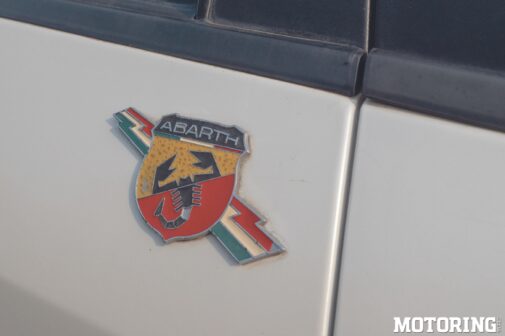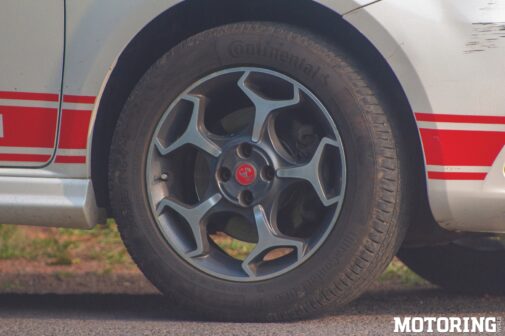I can’t say with certainty whether the driver of the BMW 3 Series tailgating me on the highway was from Delhi or not (a lot of the loutish driving behaviour on display in Goa these days is by DL and HR cars — sorry not sorry); I wasn’t really focussing on the car’s number plate, and was more concerned about the fact that he appeared to want to drive the Beemer into my rear seat. What I can virtually guarantee is that when I decided I’d had enough of him and floored it, his pea- sized brain would not have had the time (or ability) to comprehend what happened next, which was me disappearing into the horizon with a ferocity usually reserved for litre-class superbikes, accompanied by a hornets-nest soundtrack. I must confess that I laughed out loud, and then for good measure streamed some Delhi-style epithets at the dumbfounded half-wit who was now roughly 2 km behind me, tailgating thin air.
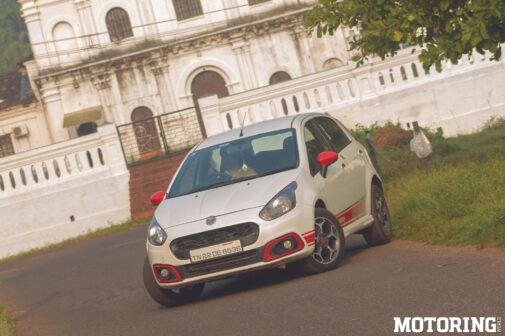
Now, 3 Series owners usually don’t expect to lose roll-on acceleration runs, but part of the reason the fellow would have been in deluxe shock was the sight of a 7-year old Fiat Punto caning his posterior so comprehensively. This car is no ordinary 7-year old Fiat Punto, however. The scorpion badge on the gate that he was trying to tail should have been his first clue that he had picked the wrong fight. This is an Abarth Punto, which in stock form put out 145 bhp and 21.5 kgm of torque via its 1.4-litre turbo-petrol, back in the day, and which would have been enough to give him a proper scare. In keeping with the ‘no ordinary’ theme, it’s no plain-vanilla Abarth either, due to the fact that its innards have been massaged to produce 240 bhp at the crank, alongside 33.6 kgm, in a car that weighs just over a tonne. With that kind of power-to-weight ratio, it’s no wonder the Beemer got… well, ratio’d.
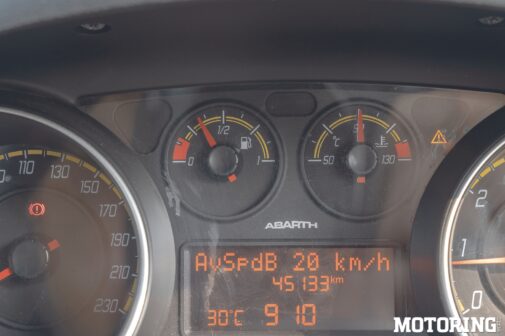
It’s apt that the car in question belongs to Naresh Ramadoss, one of the country’s top physical trainers, whose job (and passion) is to extract every last ounce of performance out of the athletes who train with him. Like so many other people, he decided to move to Goa from Chennai just after the pandemic, and he brought his beloved Abarth with him; his other ride is a Volkswagen Passat, so he clearly knows his cars. I spotted the Abarth parked outside Athleap – the training and physiotherapy centre that he set up with his business partner a stone’s throw from my house — when I’d gone there to have a dodgy shoulder fixed, and instantly asked if I could feature it in these pages; Ramadoss was happy to oblige, thankfully.

First, a little bit about the Abarth Punto, a car I consider among the greatest to have been launched in India. Fiat introduced it at a time when it was in the throes of a death rattle in this country, so it was no surprise that the car didn’t see the outside of a showroom much — but what a car it was. In 2015, there was simply no other masssegment hatchback (or sedan) that was as sizzling hot, and its sub-10 lakh rupee price tag was a bargain considering its specs — a feisty 1.4- litre turbo petrol, 145 bhp, 21.5 kgm, a lowered ride height, stiffened suspension and disc brakes all-round.
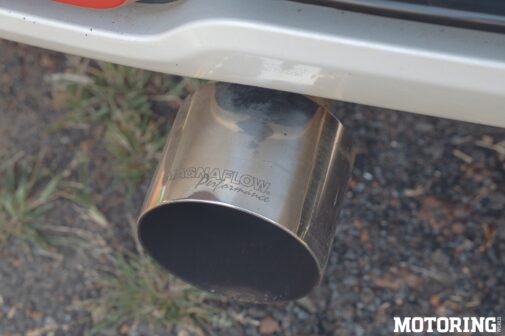
The VW Polo GT TSI — until then the most powerful hatchback you could buy — instantly fell behind in the power and torque stakes, but the Abarth comprehensively lost the sales game, which was a great pity — because * what a car *. I remember driving it soon after its launch and coming away gobsmacked at the hooliganism that ensued, and even though it wasn’t perfect — understeer and torque steer, for starters — it was still the most fun you could have in that price bracket and a couple above it, too. It also didn’t hurt that it looked smashing, and even today it stands out a mile among a sea of rather tame hatchbacks, with its classy red/white paint scheme, wicked scorpion badges, funky alloys and prominent but tasteful Abarth decals.
Ramadoss loved the car on sight and bought it in 2017, and within 18 months it was a very different animal courtesy Rajiv Chandran, who runs Wolf Performance out of Kochi. Chandran’s outfit specialises in performance upgrades of all manner of cars and motorcycles, and Ramadoss pretty much gave him carte blanche with his Abarth, with the stated aim of making it a fire-breathing sleeper, a proper one-off. Out went most of the car’s stock components, and in their place came the following: a modified Mitsubishi TD04 turbocharger, an Airtec intercooler, a BMC air filter, uprated 399cc Bosch injectors, Bilstein B8 shock absorbers, a Quaife limited-slip differential, a Bonalume short-shifter and a Magnaflow performance exhaust tip with locally fabricated down and mid pipes. A Stage 3 Wolf Moto tune was also carried out, and the ride height went from an already-lowered 155mm to 125mm. Apparently there were some concerns about a Stage 3 tune being a little too explosive for the car, but Chandran told Ramadoss that if the engine did indeed, er, explode, he would cover 50 per cent of the cost of buying a new one; talk about customer service. All this cost Ramadoss in the vicinity of ` 5 lakh, but it was the best money he’s ever spent, he says.
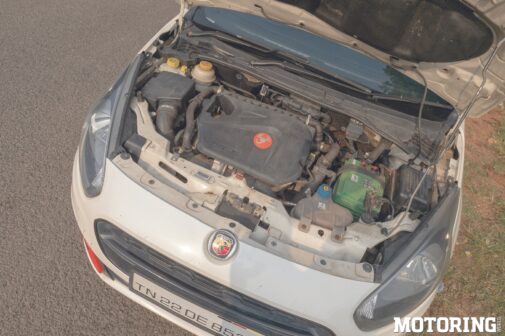
This becomes apparent pretty quickly when you get into the car and fire it up; the Abarth settles into an ominous rumble, giving you the first clue that it means business. This business has three levels, incidentally — maps 1 to 3. To engage each one, you press the loud pedal once, twice and three times respectively before start up, and the rev counter moves to 1, 2 and 3 accordingly. Map 1 gives you access to 180 bhp and requires regular petrol; map 2 pushes that to 210 bhp and needs 97 octane; map 3 is all-bets-are-off territory, unleashing the full 240 bhp and requiring a tankful of 99 octane (no prizes will be provided to those correctly guessing which map Ramadoss regularly uses).
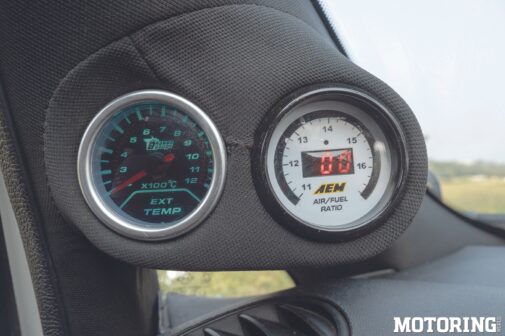
The car has a stock cabin, except for some brushed steel pedals and the boost/fuel-air gauges, which means that it’s typically Fiat — it does the job quite well, but it’s not exactly the Four Seasons. In any case, this car isn’t meant to cosset you — its main aim in life is to grab you by the neck and slap some indecency into you. The stock shifter is back in the car due to some issues with the short-shifter, and Ramadoss tells me that the Bonalume unit absolutely transformed the shifting experience; I’d have to make do with Fiat’s rather tall and mildly soggy shifter, unfortunately. Still, it’s a small price to pay in the larger scheme of things.

Said scheme consists mainly of outright hilarity, by the way. At anything below 3,000 rpm, the Abarth is surprisingly docile, and there’s absolutely no jerkiness to the process of ambling around at low speed, as you would do in traffic; you could easily use the car as a daily runner, although you’d have to make rather more visits to the fuel station than with a ‘regular’ hatchback. I actually spent my first 10-odd minutes with the car pottering around my neighbourhood, in order to see how user-friendly it was, and it didn’t disappoint — at 50 kph in 5th, it was a happy camper. The point, however, was to see if it was a crazed camper, so I pointed its nose towards NH66 early one morning, found an empty stretch, lowered the windows and floored it. Several things happened after this.
First off, a huge grin instantly appeared on my face, because the noise the car produced was just (chef’s kiss) — a low burble that went from measured to manic in a split second, filling the entire cabin and reverberating off the doors. I was pushed well back into my seat as the Abarth showed me what arm-straightening acceleration is all about, blazing off from a rolling start like it had been fired from a Bofors gun. As soon as the revs hit 3,000, the big turbo kicked in with a sound like whips being lashed, and the front wheels begged for mercy as they spun furiously( if this car didn’t have a LSD, it would simply spin its wheels and go in circles all day). They caught the road’s surface soon enough, and with that it was one endless, scenery-blurring rush through to the redline, with the speedo indicating — actually, never mind what the speedo indicated — and the exhaust belching the most glorious noises.
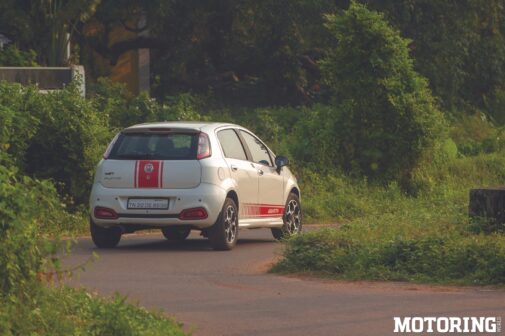
With the Bilsteins fitted, the car had been incredibly agile; Ramadoss mentioned that taking corners at 170 kph was a walk in the park (I had the good sense not to ask him where he did this). It was also very low, prone to scraping its belly everywhere and rather uncomfortable to sit in, and his family literally refused to get in the car any more, so he took the Bilsteins off and went back to the stock suspension. Even with this setup, the Abarth was a hoot to fling around corners, and the 205-section tyres provided plenty of reassuring grip, with the all-round disc brakes being absolutely essential to prevent sudden damage to any hapless lamp-posts. The steering unit talked back constantly, too, providing inch-perfect information about where the wheels were and what they were doing.
It was impossible not to keep repeating the above scenarios as many times as I could, even though the fuel gauge was dropping at an alarming rate. Pure, analogue, visceral driving experiences like this are increasingly rare in a world where it’s becoming difficult to tell an iPad from an automobile, and I was determined to milk these moments for all they were worth. When I finally worked up the willpower to cease all the tomfoolery and take the car back to Ramadoss, the first thing I did was to thank him profusely for making my day better — and the second was to ask if I could borrow the car again, at some point; he smiled, in the way petrolheads do when they recognise a kindred soul, and said ‘Any time’. Now to go and find that BMW again…










